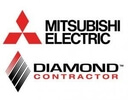It often takes some time to get through the process of deciding you need to replace your air conditioner, researching your options, determining what system you want to get, and having it installed. That’s why we recommend that you plan to replace your air conditioner before it completely fails during a heat wave, leaving you to rush through this process and potentially end up less than thrilled with your choice.
While you’re doing your research about what your AC replacement options are, you’re probably running into a lot of terms and having to learn about the differences between them—ducted or ductless, AC or heat pump, etc. A couple of acronyms you might have spotted are VRV and VRF. What’s unique about these types of air conditioners? Here’s what you should know.
VRV and VRF Mean the Same Thing
VRV stands for Variable Refrigerant Volume. VRF stands for Variable Refrigerant Flow. Why the difference? One term, VRV, was copyrighted by Daikin, a highly reputable manufacturer in the HVAC industry. VRF systems operate in the same way and are made by other manufacturers. They all control the way refrigerant is used more precisely than traditional AC systems.
How Traditional Central Air Conditioners Work
With the traditional system, there is one outdoor AC unit, which houses the compressor and the condenser coils. This is where heat absorbed from the home is released. And there is one indoor unit, which houses the blower fan and evaporator coils. This is where heat is absorbed. This system works fantastically for single, large, open spaces. However, that’s not how most buildings are laid out.
When you have a single indoor unit in a home or business with many separate rooms, it’s easy to end up with uneven temperatures and hot spots that the AC never quite reaches. Then, people in the overheated parts of the building will ask for more air conditioning. Once those folks are comfortable, people in the other areas will be freezing, and the electric bill will be much too high!
Various alternatives such as ductless systems with multiple air handlers or zone control systems which open and close dampers within the ducts can be used to compensate for this issue. VRV and VRF systems are an ideal option for avoiding this problem entirely.
The Benefits of Variable Refrigerant
The reason for the words “variable refrigerant” is that in these systems, that flow can be modified automatically. Instead of the refrigerant flowing in the same amount to the same places regardless of need, the system allocates refrigerant flow according to the cooling demand in different sections of the building. This allows for ideal comfort with no wasted energy or uneven temperatures.
Our technicians are always happy to help provide information and answers about all your home or commercial climate control options. If you’re curious about VRV air conditioning in Kerrville, TX and whether it might be the right choice for you, we’d love to discuss it with you.
Contact D’Spain Sales & Service to talk to a member of our team.






















